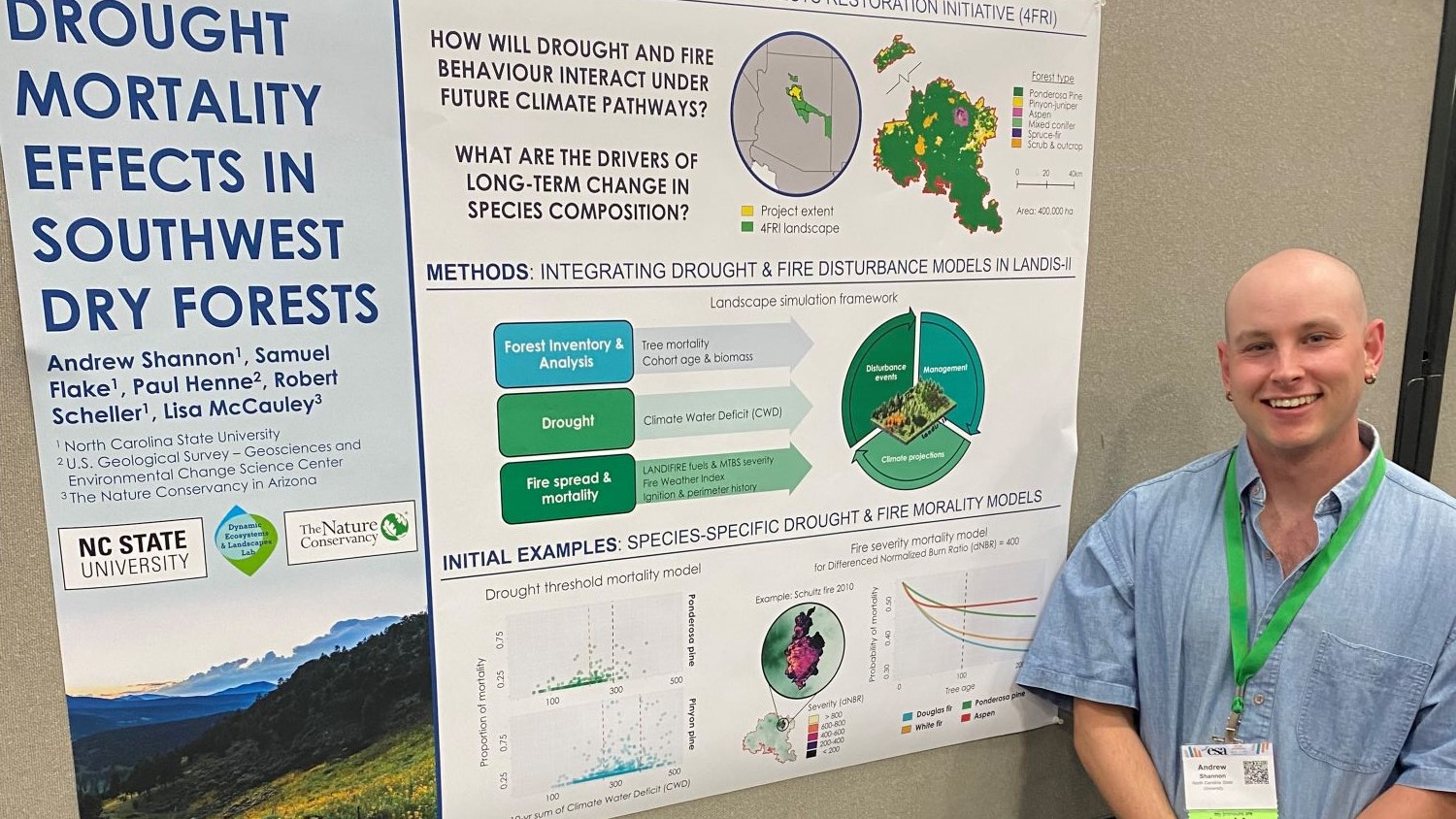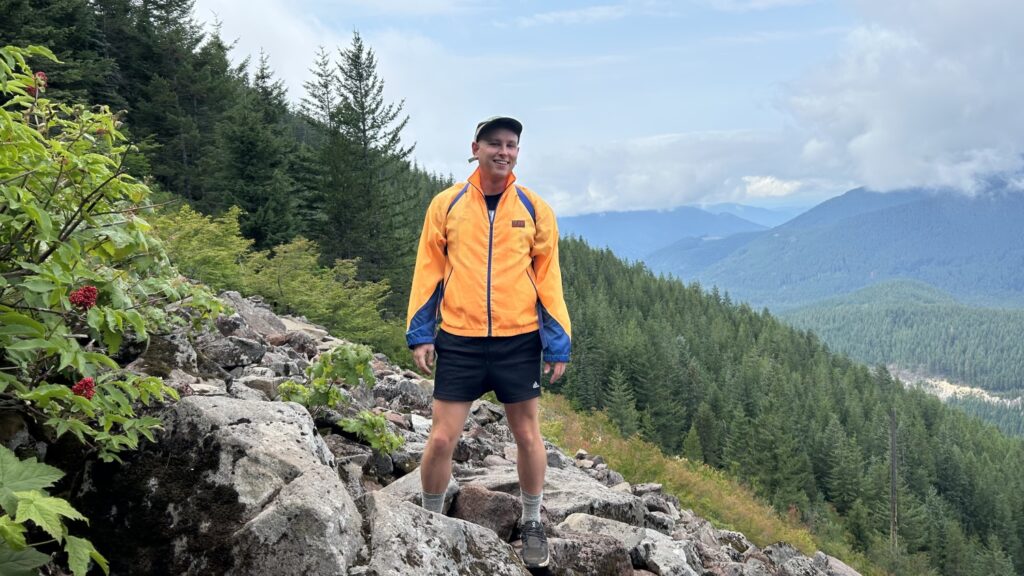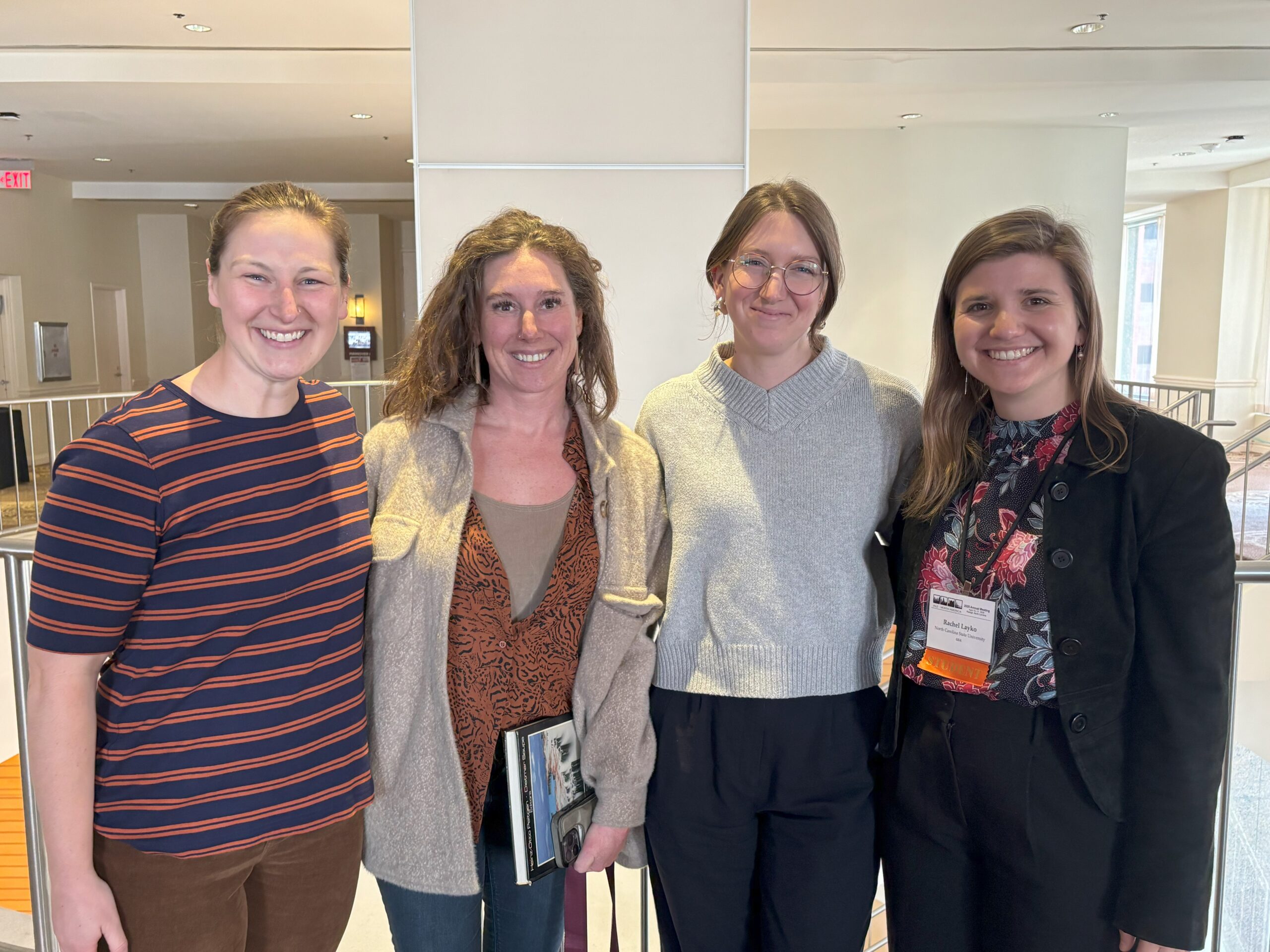Exploring New Landscapes and Discussing Landscape Models at ESA 2023

Editor’s note: Each semester, students in the Geospatial Analytics Ph.D. program can apply for a Geospatial Analytics Travel Award that supports research travel or presentations at conferences. The following is a guest post by travel award winner Andrew Shannon as part of the Student Travel series.
This past August, I had the opportunity to participate in the Annual Meeting for the Ecological Society of America (ESA) in Portland, Oregon. Heading into the third year of my Ph.D. program with the Center for Geospatial Analytics, I was more excited than ever to engage with the broader community of ecologists in attendance. In fact, there were several thousand researchers, practitioners and enthusiasts at the conference, who, like me, were eager to learn, network and share knowledge. I attended the meeting to present a poster titled “Projecting Future Drought-Induced Tree Mortality Across Dry Forests in the Southwestern United States,” which described the methodological framework for part of my dissertation research.
This project aims to develop species-specific relationships between disturbance events, including drought and wildfire, and observed tree mortality for national forest land in northern Arizona. Our team will apply these relationships to a landscape change model that projects future trends in tree mortality under varying climate pathways. During the poster session, I was thrilled to field questions from several researchers and managers from the U.S. Forest Service, The Nature Conservancy and other institutions who also work in this study site. They offered insights from their field experiences and observations of these tree species and disturbance events, which has been important feedback at this stage of the work. It felt particularly impactful to receive interest in this project not only from scientists working in this region, but also from researchers tackling similar questions in different landscapes. One manager from a Forest Service field station in the dry forests of Puerto Rico expressed intrigue in applying this wildfire modeling framework to understand future change in their forested areas. Before I knew it, the session had wrapped up, and I was feeling empowered by all the stimulating conversations I had.
Beyond the poster session, I wanted to experience all that the conference had to offer. During the day, I listened to countless talks on fire ecology, drought and forest modeling that discussed the newest findings and perspectives in these fields of study. I could see how my dissertation work fits into the bigger-picture conversations surrounding future landscape resilience, mitigation of forest fire risk and research methods to evaluate management actions. During the evenings, I spent time exploring Portland with my classmates and got to connect with many other graduate students and early-career researchers. Getting to meet one another in this setting helped form a sense of community, and I am grateful to know that many more of my wonderful peers. A personal highlight of the conference trip was arriving a day early and hiking in the Mt. Hood National Forest with my classmate. It was a breathtaking landscape that I had never seen before. Attending the ESA meeting this year has bolstered my motivation and excitement for pursuing my Ph.D. research, as I feel more knowledgeable about my field of study and more connected to this scientific community. Thanks to the Geospatial Analytics Travel Award, I was able to have a fruitful conference experience that has enhanced my time as a student!

- Categories:


